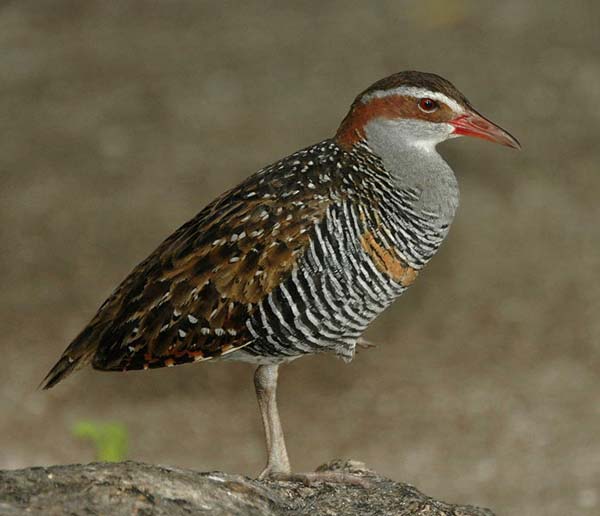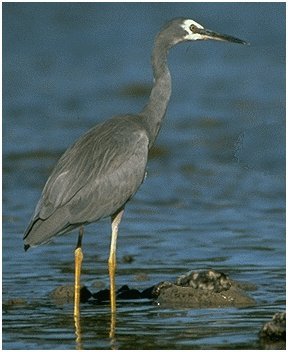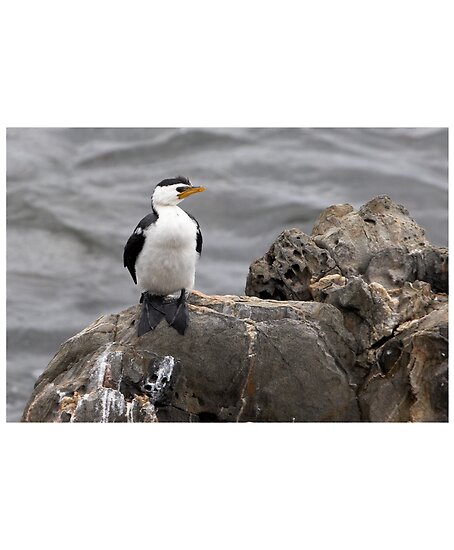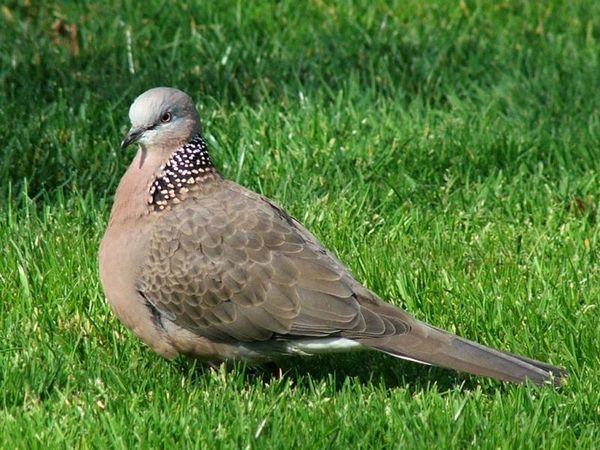Fauna in Sydney City: Birds
For this article, I will base me on the birds I saw in the royal botanic gardens because it attracts every type of NSW's birds.
* Native Birds *
Over a hundred different birds havee been seen at one time or another in the Royal Botanic Gardens. On any given day, however, a bird watcher would probably see about twenty-five/thirty. This first section will deal with Australian native birds. Early morning is the best time to see them, or late in the afternoon as the sun is going down.
Superb Fairy-wren
Also know as superb Blue wren, this is the only one of the wren family that has come to terms with human intrusion on its habitat. It is well-known and well-liked. Dominant male are blue and black and female and immature male are brown.

Buff banded rail
A small-sized well-marked ground feeding rail. Forages in low thick vegetation. The increased used of mulch on garden beds has provided a food source for this species which has recently re-colonised the Gardend. It arely flies and has a distinctive flicking of the tail while feeding or moving around.

Silvereye
It is a small greenish bird with white ring around its eyes. Some migrate long distances at night, but some stay at home. It has a sweet song and eats aphids.

White faced Heron
Also known as Blue Crane, but it is a heron, not a crane. It is pale grey with white face and yellow legs.

Australian white Ibis
It is a white large bird with naked black head and beak. Population explosion at Tarooga zoo caused it to look elsewhere for accomodation and it is now breeding on the gardens.

Willie Wagtail
Daring is defence of nests and lively in pursuit of flying insects. It sings loudly. It is white with a white belly and its fan like tail wagged sideways.

King Parrot
They sometimes nest in the gardens. The male is the only parrot with a bright scarlet head and body. Its wings are green, tail blue. Female is all green, except for crimson belly.

Rosellas
Crimson rosellas are all crimson except for Blue cheeks, wings and tail, while eastern rosellas (tomato sauce birds) are very colourful with white cheeks. Rosellas feed on nectar, pollen and fruits. They are destructive and strip of twigs and flowers with their strong beak. They are agile and acrobatic.

cockatoo
It is noisy, imitative and long-lived bird (more than 100 years!)

Laughing kookaburra
A favourite with overseas visitors who have heard about it, sung about it, but never seen it... a bird that laughs.

Silver Gull
An Australian gull, not the same as European or American seagulls. It loves parks, gardens sporting fixtures and airports. But these are the non breeding individuals - nests are built far away.

Little pied Cormorant
It is black above and white bellow, with a yellow bill. It also fishes in Farm Cove and roosts side by side with Little Black Comorant on large islands of Main Pond.

Eastern Spinebill
It has a long curved beak and brush tongue helps it in search for nectar from long flowers. Its wings flapaudibly in flight it can hover when taking nectar from flowers, that is why it is acrobatic.

* Introduces Birds*
Of the hundred or more birds that have been seen in and above the Royal Botanic Gardens, about thirteen have been introduced into this country from overseas. Seven are common in the Gardens.
Australian Magpie
It is a large black and white bird with reddish-brown eyes and white beak. It will dive-bomb people and animals during nesting season if it feels threatened (not otherwise). Be kind to Magpie and they will leave you alone.

New Holland Honeyeater
It is very common in Bushland round Sydney. It has a white ring around the eyes, which distinguishes it from similar white-cheeked honeyeater. It is black and yellow. It is usually noisy and feeds with nectar and pollen especially from Banksia flowers, and insects in season.

House Sparrow
it is a small, lively and familiar bird. Male has different plumage from female, especially noticeable in summer. Throat, upper chest and area around base of bill black while female has no black around face but a prominent buffcoloured eyebrow streak. It has a persistent voice. it is native to Eurasia , north-west Africa but now very widespread.

Spotted Turtle-dove
It is a large grey-brown bird with a glittering white-spotted black patch across the nape of its neck and pink legs. It was introduced to south-east Australia in 1870s.

Red-whiskered Bulbul
It is a jaunty bird common in city parks and suburban gardens. It is native to south and east Asia and now widespread in and around Sydney.

Blackbird
The male is a glossy all black bird except from an orange-yellow bill and ring round the eye. The female is an inconspicuous streaky dark brown. Pairs move surreptitiously among shrubs and bushes, searching the leaf litter for worms, grubs and caterpillars. It has a very musical song. It is native to Europe and Asia.
To add a little personal comment, there is a famous restaurant bar is Sydney Darling Harbour called "the Black Bird" where you can try some typical Australian drinks (such as the ginger beer), or food (such as crocodile burger or kangaroo meat).

Feral Pigeon
It is typically blue-grey with two black bars on the wing but there are many colour variations. their legs are pink. This pigeon has probably came to Australia with the first white settlers. Its wild ancestor, the Rock Pigeon is still in Europe.

Common Starling
It is glossy black, bronze-green and purple with a finely spotted appearance. This bird is entreprising and aggressive and has become serious pest. It forms communal roosts in the street trees as duck falls.

